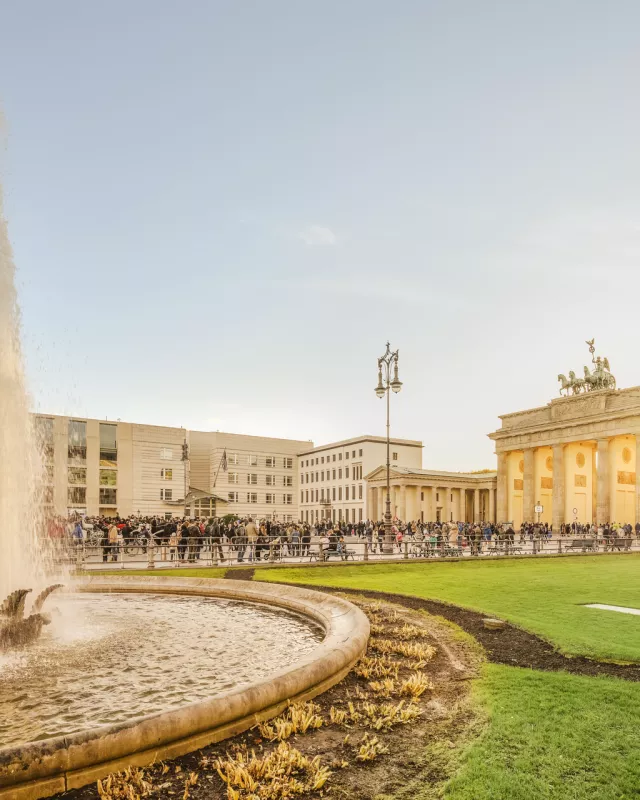The success story of Berlin tourism
Berlin, 7 November 2014 Since the Berlin Wall fell in 1989, Berlin’s tourism industry has seen rapid growth. Before the fall of the Wall, Berlin had virtually disappeared from the map. Cut off from international visitors, only a glimmer of the city’s former grandeur and vitality remained.
The fall of the wall sparked the unique comeback of a metropolis. The number of overnight guests has boomed, increasing from 2.4 million in 1989 to 11.3 million. A large part of the growth is due to visitors from abroad. In 1989, international guests accounted for 27% of visitors, while in 2013, they accounted for 43%. The tourism industry has since become Berlin’s biggest economic factor; it has created 275,000 jobs in the city and generates an annual turnover of €11 billion.
Burkhard Kieker, CEO of visitBerlin remarks: “In just over two decades, the city has positioned itself as one Europe’s top destinations. To mark the anniversary of the fall of the Wall, visitBerlin has invited those friends and partners from around the globe who have helped contribute to this success story, among them 120 top managers of the airline industry and the travel sector.”
The growing number of visitors is also reflected in the city’s tourist infrastructure. The number of lodging establishments has jumped from 398 to 801, and the number of available hotel beds has more than quadrupled from 31,000 to 135,000.
Berlin has also established itself as one of Europe’s top five meeting venues. Last year, the capital hosted 126,000 events with 10.6 million participants, which is more than twice as many as 25 years ago. There has been particular growth in medical and scientific conferences.
Milestones of Berlin Tourism
In the past quarter century, there have been many tourism-related milestones. For example, in 1995, the wrapping of the Reichstag by the artist Cristo drew five million visitors to the city. One year later, visitor interest was also piqued by the “crane ballet” at the spectacular construction site at Potsdamer Platz. The 2002 unveiling of the restored Brandenburg Gate and the 2005 dedication of the Memorial to the Murdered Jews of Europe were other highlights. Summer 2006 saw the FIFA World Cup with the massive fan zone at the Brandenburg Gate. The 2009 World Championships in Athletics were also held in Berlin.
In particular, images of the fan mile from the 2006 world cup gave the world insight into the newly-formed Berlin. Brandenburg Gate and The Straße des 17. Juni (17th of June Street) now rank among the world’s most well know places, which are also location of one of the largest New Year’s Eve celebrations and the finish line of the Berlin Marathon.
The athletic highlights will continue in 2015. Next summer, the best European football clubs will meet at Berlin’s Olympic Stadium to compete for the UEFA Champions League title. In addition, the first-ever Formula E electric car race will take place at Tempelhof.
Berlin not only defines itself by its attractions but also by the vitality of its cultural life and its tolerant and freedom-loving atmosphere. This particularly attracts young well-educated individuals who not only want to visit Berlin but also live there.
More information can be found at visitBerlin.com



